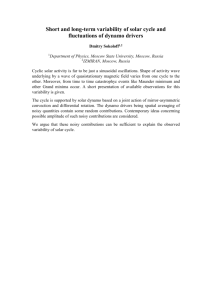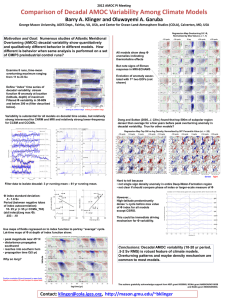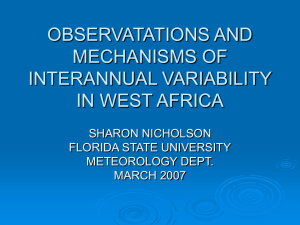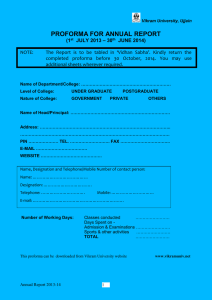A Multi-Century History of Solar and Climate Variabilities at Decadal... Vikram M. Mehta System, Clarksville, Maryland
advertisement
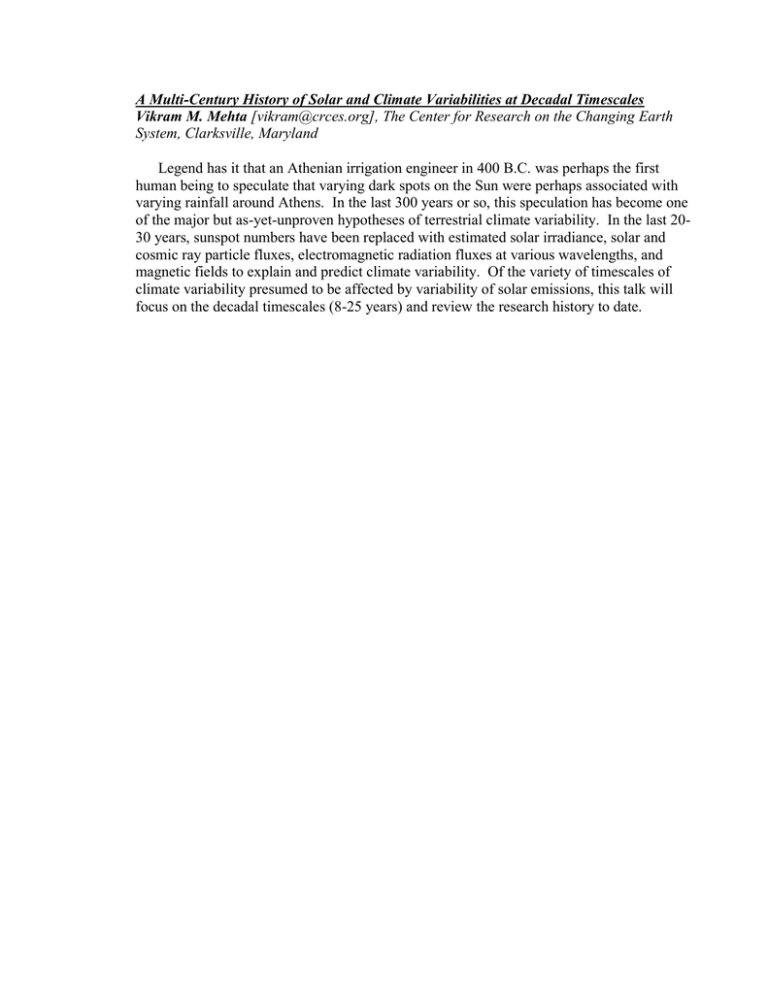
A Multi-Century History of Solar and Climate Variabilities at Decadal Timescales Vikram M. Mehta [vikram@crces.org], The Center for Research on the Changing Earth System, Clarksville, Maryland Legend has it that an Athenian irrigation engineer in 400 B.C. was perhaps the first human being to speculate that varying dark spots on the Sun were perhaps associated with varying rainfall around Athens. In the last 300 years or so, this speculation has become one of the major but as-yet-unproven hypotheses of terrestrial climate variability. In the last 2030 years, sunspot numbers have been replaced with estimated solar irradiance, solar and cosmic ray particle fluxes, electromagnetic radiation fluxes at various wavelengths, and magnetic fields to explain and predict climate variability. Of the variety of timescales of climate variability presumed to be affected by variability of solar emissions, this talk will focus on the decadal timescales (8-25 years) and review the research history to date.
